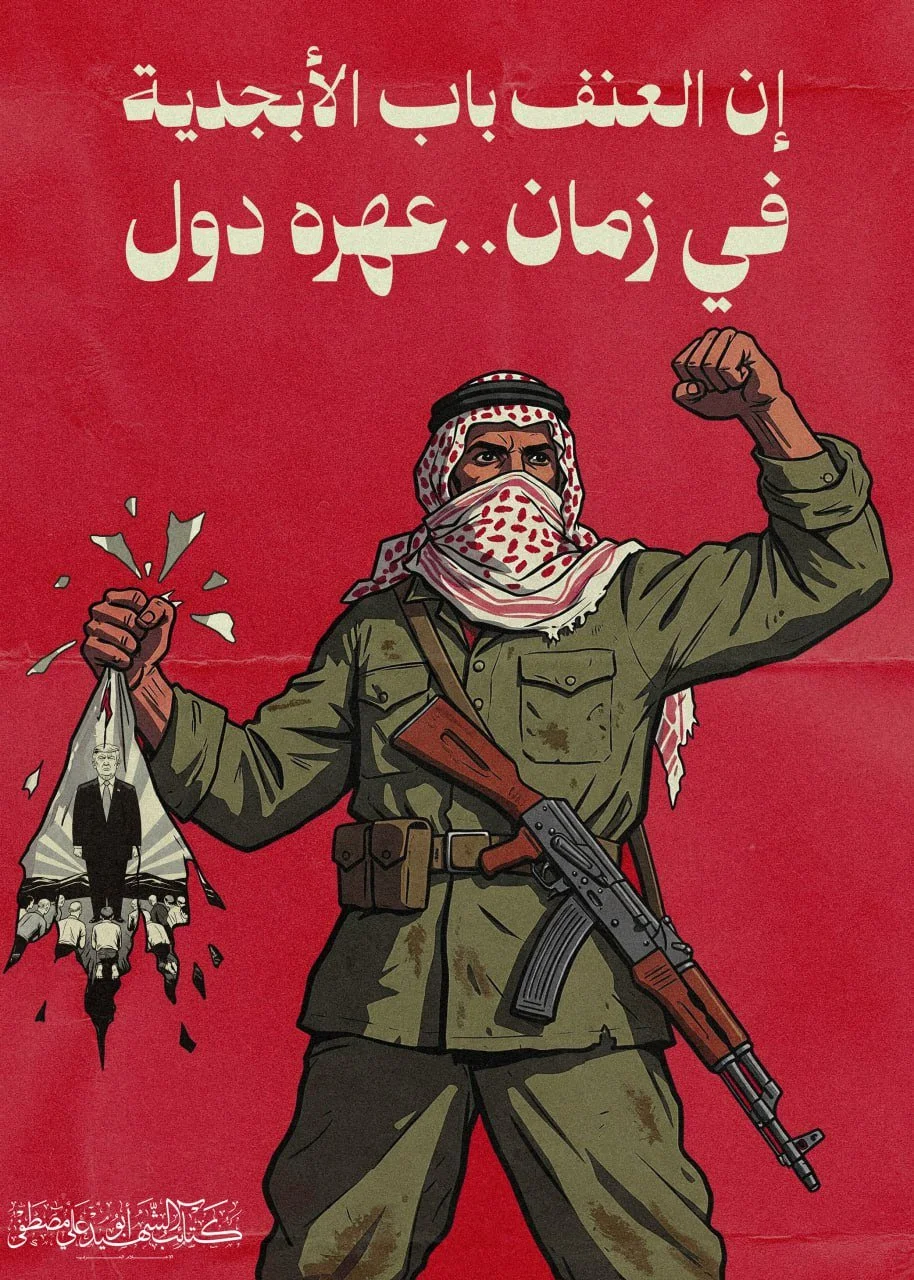Propaganda Escalates: Pro-Hamas Image Depicts Threat Against Trump Amid Ceasefire Talks
Executive Summary
A graphic propaganda poster circulated by a pro-Hamas Telegram channel affiliated with the Martyr Abu Ali Mustafa Brigades has raised alarms for its depiction of symbolic violence against U.S. President Donald Trump. Released as direct talks between Hamas and the U.S. progress, the image portrays a militant holding a torn poster of Trump, framed by armed resistance imagery and an Arabic caption glorifying violence as the “first letter of the alphabet” in a time of degraded states. The timing and messaging are viewed as a warning from hardline factions as Hamas positions itself diplomatically in ongoing Gaza ceasefire negotiations.
Analysis
The poster, disseminated online on May 15, 2025, features a militant figure clad in a keffiyeh and military fatigues, armed with an AK-style rifle. His left hand clutches a torn piece of paper depicting a suited figure unmistakably resembling former U.S. President Donald Trump, standing over a crowd of bowed figures. The Arabic caption reads:
“إن العنف باب الأبجدية في زمان.. عصره دول”
“Violence is the doorway to the alphabet in a time when nations are debased.”
The bottom corner includes the signature of the Martyr Abu Ali Mustafa Brigades, the military wing of the Popular Front for the Liberation of Palestine (PFLP), a U.S.-designated terrorist group.
This imagery arrives amid sensitive diplomatic developments: Hamas has confirmed direct communications with U.S. officials, offering to relinquish control of Gaza in exchange for terms including full Israeli withdrawal and aid access. The talks are being brokered by U.S. envoy Adam Boehler in coordination with Qatar.
The image is deeply symbolic
The torn Trump figure represents resistance against perceived U.S. imperialism and Trump’s close alliance with Israel.
The militant’s posture—fist raised in defiance—evokes the classic iconography of revolutionary struggle.
The Arabic phrase implies that, in an era of corrupt or illegitimate states, violence is not just a reaction but the foundation of communication.
While the message stops short of directly inciting violence against Trump, it unmistakably positions him as a target of ideological hostility and potentially as a rallying figure for militant recruitment. Analysts view this as a psychological warfare tactic aimed at multiple audiences:
Internal factions within the Palestinian resistance, where the image strengthens anti-normalization narratives and delegitimizes peace overtures.
U.S. negotiators, who may perceive this as a veiled threat intended to influence or destabilize ceasefire discussions.
Israeli leadership and allies, framing any deal with Hamas as being orchestrated under threat of force.
Importantly, this propaganda stands in stark contrast to Hamas’s official diplomatic posture, which has portrayed itself as ready to govern responsibly or even step aside. The divergence between the hardline militant imagery and negotiation rhetoric illustrates the fragmented nature of resistance media and the challenges for U.S. policymakers navigating these channels.


